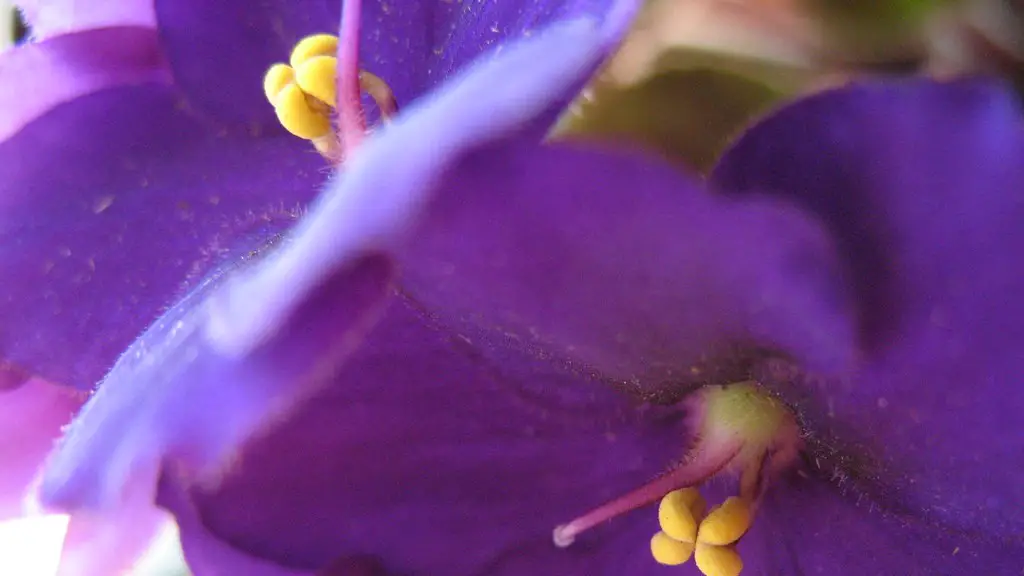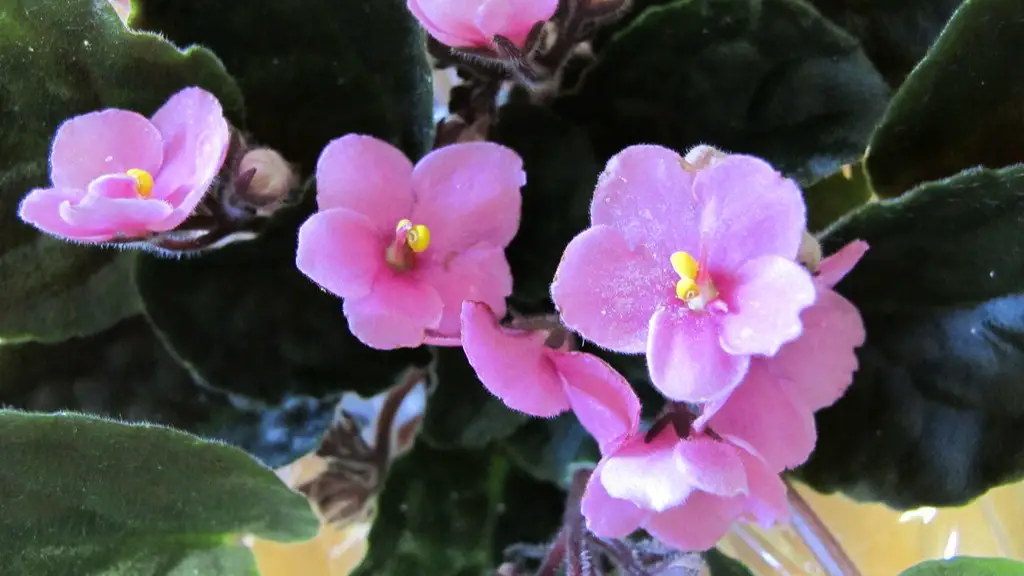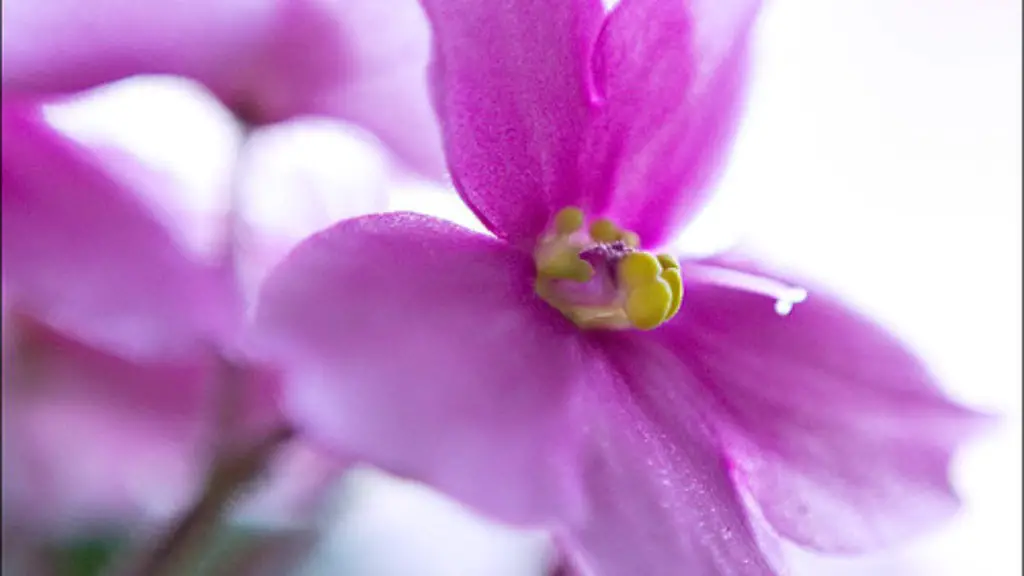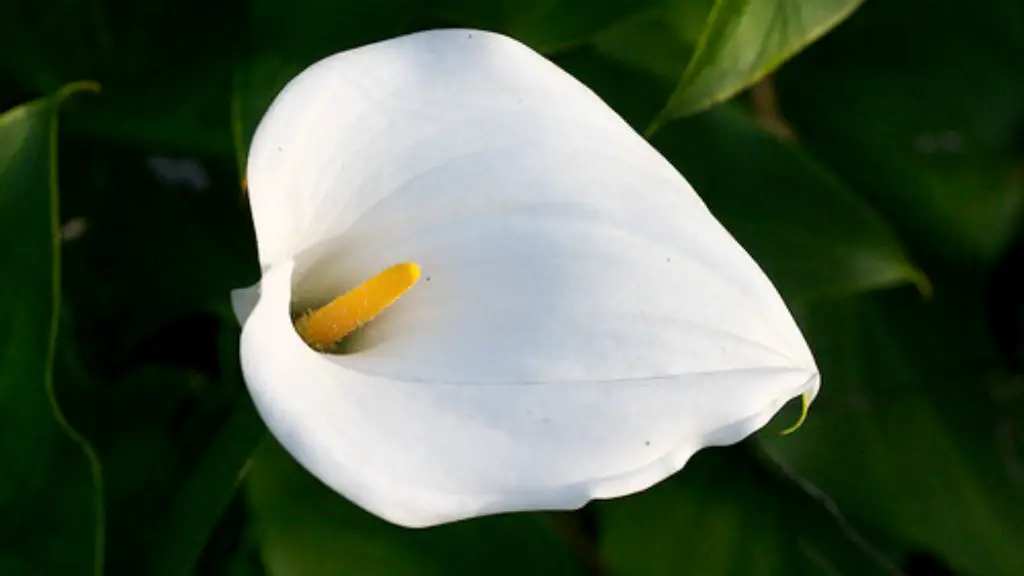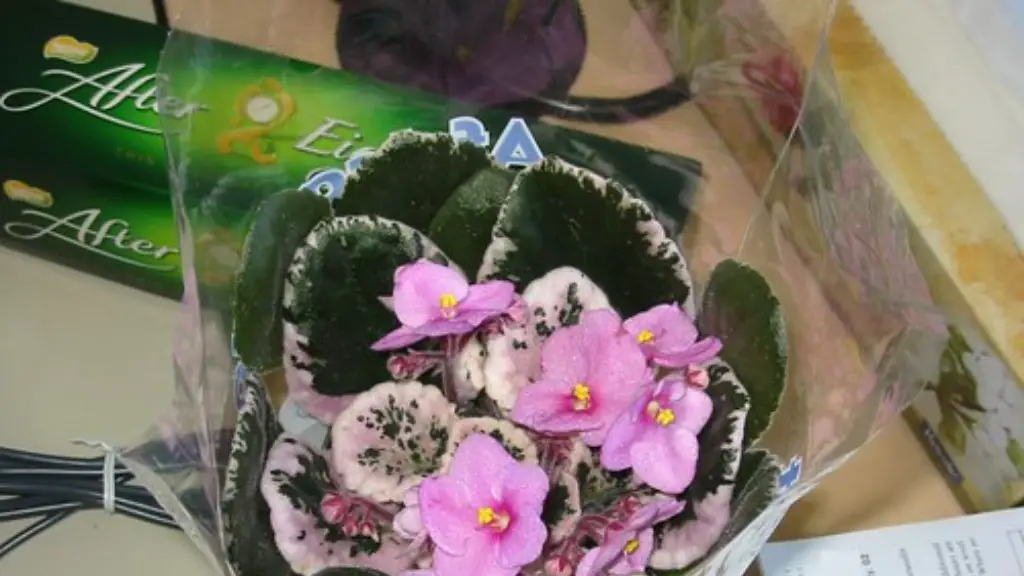African violets (Saintpaulia) are a popular houseplant because they are easy to grow and care for. They are native to Africa, where they grow in the forest understory. These plants like bright, indirect light and want to be kept moist, but not wet.
The best way to raise African violets is to start with a young plant. You can either purchase a young plant from a nursery or propagate one from a leaf cutting. Once you have your young plant, pot it in a light, well-draining potting mix. Water it regularly, but be sure not to overwater, as this can lead to rot. Place your African violet in a bright location out of direct sunlight. fertilize it monthly with a water-soluble fertilizer. With a little care, your African violet should thrive and bloom for many years to come.
How often should African violets be watered?
A wicking system is a great way to make sure your African violets are never over watered. Simply fill a reservoir with water and place it under the pot. The water will wick up into the pot, watering the plant as needed.
Houseplants need bright, indirect sunlight to thrive. Too little sunlight will cause them to stretch for the light and produce few or no flowers. Too much sun can burn the leaves. An east-facing window is ideal, especially with a sheer curtain to block the sun’s harshest rays. Houseplants also need eight hours of darkness every night.
How do you take care of African violets indoors
African violets need indirect sunlight, so a north- or east- facing window is best. Keep plants away from cold glass and rotate the pot once a week so all leaves receive light. Extend daylight by placing African violets under a grow light during winter months.
It is best to water African violets from the bottom, using lukewarm or warm water. This helps to avoid leaf spots, which can occur if water gets on the leaves when the plant is in the sun.
Should African violets be misted?
As with most plants, African violets need to be watered regularly. However, it is important to not mist the foliage as this can cause permanent leaf spotting. Use room temperature water and water the plant until the soil is moistened. Be careful not to saturate the crown as this can lead to crown rot.
If you are unsure about the quality of your tap water, it is best to err on the side of caution and use filtered or distilled water for your African violets. Chlorine, chloramines, and dissolved solids can all adversely affect the health of your plants, so it is best to avoid them if possible.
Can you use Miracle Grow on African violets?
African violets need a well-drained, slightly acidic soil in order to thrive. Miracle-Gro® Indoor Potting Mix is specially formulated to provide indoor plants like African violets with just the right growing environment. By using this potting mix, you can help ensure that your African violets will flourish.
Self-watering ceramic pots are ideal for moisture-loving African violets. The inner pot is unglazed, allowing the water to slowly penetrate through to the soil from the outer pot. This prevents the soil from becoming too wet and helps to keep the roots healthy.
What month do violets bloom
There are two types of wild violets, viola papilionacea and viola sororia. They are both low-growing perennials that bloom in mid-May. Some people consider them a lovely decorative plant for gardens and landscaping, while others consider them a bothersome weed because they display an aggressive behavior that is very hard to control.
It’s important to choose a pot that’s on the smaller side when you’re growing African violets. This will help them to stay slightly pot-bound, which is ideal for these plants. A good rule of thumb is to choose a pot that’s 3-4 inches in diameter for a standard African violet plant.
What kills African violets?
If you want to get rid of wild violets in your lawn without harming the grass, you can use a broadleaf herbicide that contains 2,4-D or Dicamba. Another great option is Drive (quinclorac), which will selectively kill the violets without damaging the surrounding vegetation.
If you have coffee left in your carafe, don’t pour it down the drain! You can use it to fertilize your plants, both indoor and outdoor. Coffee grounds (and brewed coffee) are a source of nitrogen for plants, producing healthy green growth and strong stems.
How do I know if my African violet needs to be repotted
When you see your African violet doubling or even tripling in size, it’s time to repot it into a larger pot. Otherwise, the roots will become too bound and the leaves will start to wilt. McEnaney says that this is a pretty simple process that will keep your plant healthy and happy.
It is important to repot African Violets with fresh potting soil to ensure that they continue to grow and thrive. This should be done at least twice a year, or whenever the plant becomes rootbound. Rootbound plants are those whose roots have outgrown their current pot and are growing out and around the rootball. This can cause the plant to suffer from a lack of nutrients and water, so it is important to repot them in a larger pot with fresh potting soil as soon as possible.
How long will an African violet live?
African violets are beautiful flowers that can brighten up any room. They can live a long time, as long as 50 years, with proper care. Repotting African violets is an important part of taking care of them. The trick is knowing when to repot and what size soil and container to use. With a little bit of care, your African violets can be a part of your home for many years to come.
African violets are best watered from the bottom up. Place the plant in a shallow tray of water for 30 minutes, allowing the soil to soak up the water through the drainage holes at the bottom of the pot. This will help to prevent the leaves from getting wet and will also help to keep the soil evenly moist.
Final Words
To raise African violets, you will need to start with a healthy plant. Choose a plant that has green, healthy leaves and no pests. Once you have your plant, you will need to water it regularly, fertilize it monthly, and provide it with bright, indirect light. African violets also like to be misted, so be sure to mist your plant daily.
African violets are a type of plant that is native to tropical Africa. They are known for their beautiful flowers which can be purple, pink, blue, or white in color. African violets are relatively easy to care for and make great houseplants. Some tips on how to raise African violets successfully include:
-Picking the right pot: African violets need a pot that has drainage holes and is only slightly larger than the root ball of the plant.
-Watering correctly: Water African violets from the bottom by filling the saucer under the pot and letting the plant absorb the water through its roots. Don’t let the leaves of the plant get wet as this can cause them to rot.
-Providing adequate light: African violets need bright, indirect light. A south-facing window is ideal.
-Fertilizing: Use a high-quality African violet fertilizer and fertilize every two weeks during the growing season (spring and summer).
By following these tips, you should be able to successfully raise African violets.
